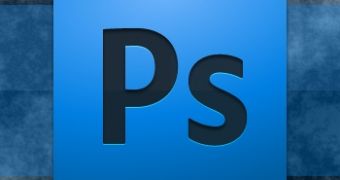The most popular image editor in the world turns twenty years old at the start of February 2010. First released under Adobe in 1990, Photoshop has obtained cultural status in numerous domains. From web design to digital photography, from the print industry to art schools, its adoption was complete and without any regrets.
While in many cases, proprietary software licensed at a high price as Photoshop is being replaced in many companies with less costly products or with freeware, Adobe Photoshop has managed to prove that its unique features and high-performance tools are more than irreplaceable. They are industry standards.
Even if some user polls have piracy rates at about 60%, and 68% of users seem to be willing to pay between $50 and $200 for a Photoshop license, Adobe continues to market it at price ranges between $600 and $1,000. Many of its users are willing to pay such a hefty price, either from the real value to their business, or just because of the irreplaceable knowledge they have gained during their career in Photoshop usage, not translatable in other image editors.
As a product, Adobe Photoshop is now a top of the line software program, a trend setter in interface design and image manipulation. But things weren't always like this. To celebrate Photoshop's two-decade anniversary, we'll present a short history of how the product came to be, starting with its early days in the '80s with the Knolls and reaching its pinnacle of glory in the 2000’s with the CS series.
Living with the Knolls
The two people responsible for Photoshop's birth are Thomas and John Knoll from AnnArbor, Michigan USA. Their father, renowned college professor at the University of Michigan in the Department of Engineering's Nuclear Engineering and Radiological Sciences, was the one that developed their love for photography and computers.
Back in 1978, he bought an Apple II Plus computer, which he used for his researches. Fascinated by this new machinery, John soon started mastering the computer, which later proved very useful, getting him a job with the famous special effects studios ILM (Industrial Light and Magic), part of Lucas Films, a company owned by Hollywood director George Lucas.
Thomas was more fascinated with his father's other hobby: photography. Mr. Knoll Sr. had a dark room set up in the basement, where he developed and processed his own photography. It is there that young Thomas Knoll learned all the tricks of a professional photographer, which he would later incorporate into his new project.
In 1984, the Apple II was replaced by a more powerful computer, a Macintosh, and in 1987 by a Macintosh II, to help young Thomas Knoll with his Ph.D diploma, entitled “Processing of digital images.”
Photoshop's birth came from his work on his diploma, trying to fix a problem with the Macintosh machines that couldn't display gray-scaled imagery. To fix this, Thomas wrote a code subroutine. Intrigued by the computer's power and ability to fix digital imagery, he dedicated more and more time to this program, rounding up a large amount of subroutines and programmatic code for image processing.
Putting together all the small scripts and code snippets, Thomas came up with a C-shell program that ran from the CLI, and named it Display. To test it and get some feedback, Thomas gave the program to his brother John, who at that time started working at ILM. The latter was so impressed with Thomas's work that he encouraged him to keep adding features to Display.
ImagePro and Early Commercial Success
At that time, ILM had just bought a $135,000 computer, called Pixar, to help handle image processing tasks. Impressed by the fact that his brother's software did practically the same thing, but on a $2,599 computer, John insisted that Thomas continue working on Display and build it as a GUI for users to employ with ease.
After more laborious work, in 1988, Display was renamed ImagePro and came with features like gamma correction, burn tool, color dodge, contrast, hue, etc. Opting to postpone some important events in his life, Thomas Knoll took a serious gamble on ImagePro in 1988, working with his brother to seriously turn ImagePro into a full-fledged commercial app.
While other image processors were already being launched on the market, the brothers switched strategy away from delivering the first image editing tool to providing the most complete one. Freshly encouraged, Thomas then chose to dedicate six months of his life to work strictly on ImagePro, for John afterward to try to sell the product to a software company.
Using his industry ties in Silicon Valley, John got some auditions at several big companies like Amiga, EA Sports, SuperMac, but all of them eventually turned them down. The only that decided to give the software a chance was a small scanner company called BarneyScan.
Because of copyright conflicts, ImagePro had to be renamed before being shipped to production, and the brothers chose Photoshop to be the new name of their product, which was to be shipped with every scanner that BarneyScan sold. Unfortunately for the Knolls, only 200 scanners and Photoshop copies went out, but this experience proved to be very valuable when they later decided to give another pitch for their product at an up and rising company called Adobe.
With a previous market outing under its belt, Photoshop didn't look as more of an experiment for Adobe, helping the Knolls get a more fair and objective demo test with Adobe's managers. At that time, Adobe's creative department was headed by a man called Russell Brown, who immediately fell in love with the program and its features, which helped convince Adobe to buy it and put it on the market as soon as possible.
Russell Brown later went to win an Emmy award for his Photoshop instructional videos in 2008.
The Adobe Era
Photoshop 1
Adobe worked franticly with John and Thomas to improve the program before it would be released. The first version was available only on Macs and introduced some basic tools like: the hand tool, image zooming, paint bucket, color eyedrop, lasso tool, brush tool, eraser, etc.
Its tools look very similar to what we can find in a modern Windows Paint program, plus some extras.
Screenshots of the first version can be found at this link. Courtesy of GUIdebook.
Photoshop 2
A year later, in 1991, Adobe released version 2, which premiered tools like vector paths, rasterizing, CMYK colors, foreground/background primary selected colors and a memory usage of 4MB instead of 2. In 1992, the Adobe management team chose to launch a Windows version of the program, named Photoshop 2.5. Filters and palettes were also implemented with this version.
This was the first Photoshop version that broke into the print industry, complementing Adobe's other tool: Illustrator.
Screenshots of this version can be found at this link. Courtesy of GUIdebook.
Photoshop 3
Thomas Knoll was still at the forefront of development with this release, implementing the “layers” feature, a revolutionary concept that saw graphics being arranged on different visual levels, and then compressed into the final image on top of one another.
The 2.5 release implemented on Windows was also raised up to par with the Mac version, fixing several memory usage bugs. Slowly, Photoshop engulfed the image editing market, both for Windows and Mac machines. The layers and tabbed palette windows were an innovation in user interfacing, making Photoshop one of the easiest tools to learn and use for image editing.
Screenshots of version 3 can be found at this link. Courtesy of GUIdebook.
Photoshop 4
With Adobe's range of programs expanding each year, the company opted with this version to unify the interface with other Adobe products, something very common in recent years. While users haven't agreed right from the start with this decision, these days, it is a life saver for those who learn an Adobe product and migrate to another due to a better fit.
Photoshop version 4 introduced two other features that are now crucial to every graphic artist. One was adjustment layers that let designers apply the same effect to a group of layers. The other was the “Actions” feature, a macro-ing tool, which allowed designers to apply a group of commands over and over again.
Screenshots of Photoshop 4 can be found at this link. Courtesy of GUIdebook.
Photoshop 5
In 1998, with the Internet boom in full stride, Photoshop started to take the stage as the primary tool to build website layouts. As designs began to get more and more complex, the developers answered with a bunch of new and useful features.
Color management was internalized within the application and the magnetic lasso selection tool premiered, being greeted with many praises, making picture area selecting a very easy task. Another success was the modifications to the History tool, which would allow from then onward for designers to perform multiple undos to their photos.
The print industry was also targeted with a new feature that allowed the adding of editable type, which would not rasterize or degrade.
A year later, in 1999, version 5.5 was released, inclined more towards web design. It came with the “Save For Web” menu option and bundled Photoshop with ImageReady. In later versions of Photoshop, ImageReady features were incorporated, but bundling different software products together remained a trend at Adobe.
“Safe For Web” made all the difference for webmasters, which could now save graphics at smaller sizes with ready-made presets, optimized for web usage.
Screenshots of the fifth version can be found at this link, version 5.5 here. Courtesy of GUIdebook.
Photoshop 6
Layer styles and vector shapes were the two main features added to version 6. Layer styles allow designers to add certain styling options to the entire layer, no matter what it contains. With Illustrator continuing its battle with Corel Draw, Adobe made a bold and inspired move by incorporating more vector commands and options into Photoshop, which had a much larger user base than Illustrator. Photoshop users got more acquainted to the way Adobe was handling vectors, and users were willing to give Illustrator a chance, at the cost of Corel Draw after previously learning the interface in Photoshop.
Ergonomic changes were made to the interface, moving the crop tool away from the marquee tool and providing more visibility and easy access to layer blending options.
Screenshots of Photoshop 6 can be found at this link. Courtesy of GUIdebook.
Photoshop 7
Even with Photoshop Elements, a simplified environment for dealing with photos, being launched in 2001, the 2002 release of Photoshop 7 brought to the table perhaps the biggest set of new changes in all releases.
The program's core sustained the majority of changes, being optimized for Mac OS X, eliminating major faults that led to crashes while working with files. It was then that working graphics on a Mac became a must from just being a caprice.
Major changes were made to the brush tool, allowing users to create their own custom brushes, also with the addition of the patch tool and a heal brush.
The text type utility was enhanced with a spelling checker, a find and replace tool, and using fully vector-based types.
A batch renaming tool was also added, along with an image browser and gallery feature. Rollover effects and workspace management were very useful add-ons as well.
Screenshots of Adobe Photoshop 7 can be found at this link. Courtesy of GUIdebook.
Creative Suite Series
Photoshop CS
Adobe's rebranding experiment led to Photoshop 8 being renamed Photoshop CS (Creative Suite). This release introduced layer grouping and the CDS system that recognized and prevented currency forgery. Tools for better file support and 16-bit imagery were introduced, at the delight of photographers.
Screenshots of Adobe Photoshop CS can be found at this link. Courtesy of GUIdebook.
Photoshop CS2
Major changes to the programs’ GUI were made for this release, the most important being moving the paint bucket tool under the gradient button. The link column for layer handling was also replaced with a small button beside each layer, and the vanishing point feature was introduced for image perspective manipulation.
Other important features like multiple layer selections and the smudging tool were introduced. “Smart Object” was another game changer that came with Photoshop CS2, and it allowed designers to group, scale, edit and save several layers without any loss in quality or performance. Practically, it introduced another Photoshop document inside the original PSD.
Screenshots of Adobe Photoshop CS2 can be found at this link. Courtesy of GUIdebook.
Photoshop CS3
The main tagline for CS3 was “performance.” From Mac stations to Windows machines, the program did everything faster and better. Adobe reduced boot time, added tools for graphic optimization in mobile devices, added a cloning tool and introduced the highly acclaimed “Quick Selection Tool.”
Starting with CS3, Adobe also started shipping Photoshop within a bundle of other Adobe products, as well as a standalone product. These versions were named Extended and Standard.
Photoshop CS4
Released in 2008, a year after CS3, CS4 resolved some very old issues dealing with edges, masks and adjustments, also introducing a tabbed interface when handling multiple opened documents. This version also removed the delay when panning or zooming large graphics and the first tools for 3D object manipulation.
Present Day and Future
While through the years, Photoshop's splash screen seemed to get bigger and bigger, being overwhelmed with programmers that have worked on the program, the first name that always appears is still the one of its conceiver: Thomas Knoll.
Even not as involved in the project as he was in the beginning, Thomas is still working on a Photoshop related-project, entitled Camera Raw, which develops an environment for integrating camera models, raw image formats and Photoshop itself.
Even without his leadership, Photoshop's future seems pretty bright, the development team posting news on Adobe's Facebook page, announcing CS5 being released in mid-2010, bringing new tools like warping and 3D brushes. It comes to follow a trend set in recent releases for integrating more 3D tools and a much simpler Mac-like interface.
Meanwhile, John has left software development to the pros and since version 2.0 was not involved in any Photoshop dev work. Today, John Knoll is still a special effects guru at ILM, having worked on famous movies like Avatar, Star Wars ep. I, II and III, the Mission Impossible saga, Pirates of the Caribbean trilogy, Harry Potter, Star Trek and more. An interview with John Knoll about the early Photoshop years can be viewed here.
Considered one of the killer-apps for the Mac, Photoshop is one of the products credited to have kept Apple alive through the rough period at the start of the early '90s, when the company almost went completely underground. Since then, it's clearly visible in every of Apple's marketing strategy, a soft spot for graphic designers and Photoshop users. To cement its huge success as a product alone, Adobe Photoshop 3.0 was ranked 11th in a top of Best Tech Products of All Time by PC World in 2007.
Adobe Photoshop CS4 can be downloaded from Softpedia at this link. Adobe Photoshop CS3 Extended can be downloaded from Softpedia at this link.

 14 DAY TRIAL //
14 DAY TRIAL // 

